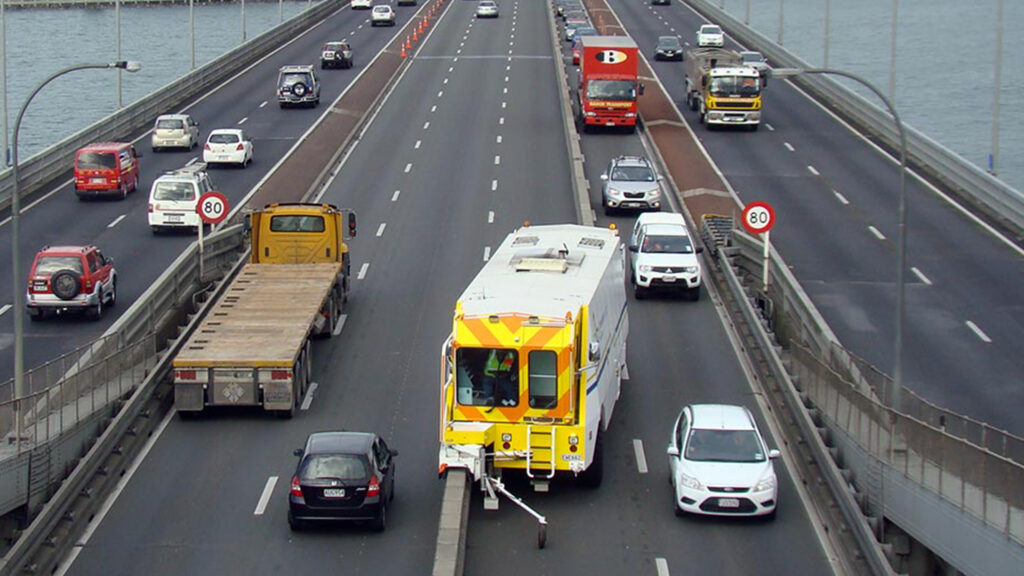- A video of a truck eating and pooping concrete blocks to keep traffic flowing on a New Zealand bridge has gone viral.
- The truck picks up the blocks and moves them as it passes to change the layout according to the traffic situation.
- Although the system isn’t new or unique the video has generated plenty of attention on social media.
Traffic levels are constantly shifting throughout the day, but road layouts are generally fixed and that can lead to snarl-ups. Some roads, however, can change configuration to accommodate different traffic needs and a video of one such stretch of asphalt has become a minor celebrity on social media.
It shows a strange truck crabbing along New Zealand’s Auckland Harbour Bridge and looking like it is chowing down on a snake of concrete blocks before depositing them behind it. But when it drops the blocks back down they’re several feet to the left of their original position, effectively removing a lane from traffic that doesn’t need it and giving it to those heading in the opposite direction who could do with the extra space.
Related: Speeding Audi Driver Hits Six Cars In Fatal Traffic Accident
“This machine moves barriers on the Auckland Harbour Bridge to help keep you moving efficiently,” the New Zealand Transport Agency explains in the text accompanying its video.
“It has two engines, moves like a crab, and picks up 16 of these 750 kg (1,650 lbs) concrete blocks at a time. We change the lanes to cater for traffic flows.”
Although the video has racked up lots of views on social media and the truck hailed as brilliant by many commenters who think their local roads could benefit from something similar, the system is neither new or unique. ‘Barrier transfer machines’ or ‘zipper trucks’ have been operating on the NZ bridge since 1990, and other cities around the world, including Sydney in Australia and San Franciso and San Diego in the US employ something similar.

And even among those who have never seen one before, not everyone is impressed. Some have asked why the New Zealand Transport Agency doesn’t just use lights to change the lane directions, a system used on other bridges, including one local to me.
In its case study of the Auckland bridge, Lindsay, the American company that supplied the zipper truck, explains that lights were used in the 1970s and 1980s to reverse the direction of the central lanes during morning and evening rush hours. But 10 fatalities resulting from head-on crashes between 1984 and 1988 led to the introduction of the zipper barriers at the beginning of the following decade.
The original system lasted 19 years and was replaced by the current setup in 2009, which can move the barriers at up to 10 mph (16 km/h) and re-lay the complete 1.4-mile (2.2 km) stretch of dividers in around 20 minutes.
H/t to Drive



